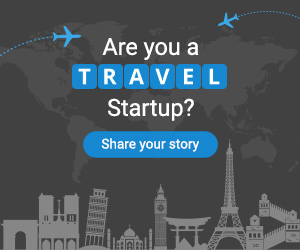Acquiring new customers is good but acquiring customers who keep coming back is even better. In travel, the frequency of purchase could be low translating into a platform or service being dropped by some customers over time. Many might not make a second purchase for a long time. However, you are not losing even if you have to spend to get the attention of customers who have previously made a purchase with you. This is because an average buyer would not be very confident when shopping with a platform for the first time and this will limit how much he or she is going to spend. Various researches indicate that repeat customers tend to spend more as they gain trust in the platform. Here are some practices that would allow you to drive up the number of repeat customers:

Contextual prompts
Email, text messages, app notifications can all be good ways to communicate with a customer. However, there is a line that you shouldn’t cross to stay useful to your customers without annoying the hell out of them. Keep some communication channels limited for special occasions and put more effort into others by making the message more useful. Pick on trends, listen to what the masses are talking about on social platforms and use that to your advantage. Sending 10 percent discount codes everyday won’t cut it.
Track behaviour
Look beyond the obvious behaviour of customers. Observe the behaviour of shoppers who didn’t buy, app users who uninstalled in a week and more. Apart from Google Analytics for web, there are powerful tools that you can use in your apps to track behaviour which would give insights on why users are abandoning and not coming back. Via.com follows app uninstalls with a mail seeking feedback which is a good practice as well.
Use deep linking
Users might have your app sitting somewhere in that every expanding app drawer but it isn’t doing you any good, is it? At times you might need to give them a nudge towards a certain utility that they would find useful. Deep linking would allow you to drive the users directly to a certain feature instead of pushing them to the app home. Deferred deep linking would allow you to direct users to specific features even if they have uninstalled the app.
Simplify accounts
A sign up process that requires the user to fill up a form not only serves as a deterrent for new customers but also for returning customers. Naturally if you get any user to sign up by filling a form, you would ask him or her to set a password which is in addition to the dozens required by mails and social media. There is a very good possibility that if you are not offering a daily utility (which is obviously the case with most travel brands), the user won’t remember the password and might just look for alternates when you ask for login. Keeping the social media sign in option can prevent that.
Give back
Arguments vary widely on the importance of loyalty programs and cashbacks but if crafted well, they can drive significant volume of returning customers. Users are more likely to use certain loyalty program and the associated service if the same program allows them to gain and use across multiple services. AirAsia BIG is one good example of such a program. The ability to gain points on frequent purchases are more likely to make a user opt for a certain program putting digital wallets and credit card providers on list of potential partners.
Quality support
Nothing is more capable than the good old methods in creating brand loyalists. Quality experience along with prompt and satisfactory support will ensure that not only your customers come back to you but also put out a good word for you online or offline.
Do share what practices you follow to keep the customers coming back to your product.



















